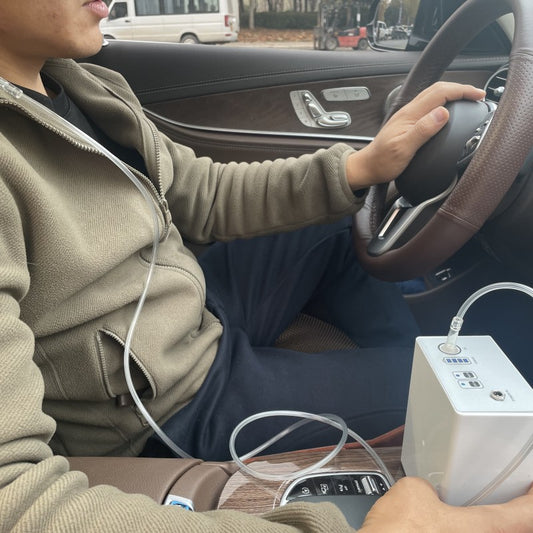How to choose the right oxygen concentrator
The family can sometimes only watch the elderly cough and asthma gradually worsen, and finally send them to the hospital for a few days.
Patients with COPD often have recurrent attacks and seek medical treatment repeatedly, and it is even more difficult for the patient's family!
Long-term home oxygen therapy is a lifesaver for such patients, which can not only effectively alleviate the condition, but also reduce the frequency of hospitalization and improve the quality of life.
The purchase of oxygen concentrator is the primary problem to achieve long-term home oxygen therapy, so what do we need to know about the purchase of oxygen concentrator?
When choosing an oxygen concentrator, it is necessary to distinguish between medical type and health care type
There are 2 main types of oxygen concentrators sold in the market, health care type and medical type.
The purpose of the health care oxygen concentrator is to increase the supply of oxygen to the brain, relieve physical fatigue, restore physical functions, and improve the efficiency of learning and so on. The advantages are small, portable, low price, low power consumption, and the disadvantage is low flow, which does not meet medical oxygen standards.
The medical oxygen concentrator is a kind of medical equipment, and the oxygen manufactured by it must meet the national medical oxygen standards, and can only be sold after obtaining the relevant national license, for the purpose of medical treatment, of course, it also has the function of "health care". Advantages: Sustainable and stable oxygen supply, up to medical oxygen standards, health care functions, and can assist in disease treatment. The disadvantage is that the volume is generally larger than that of the health care oxygen concentrator.
Choose an oxygen concentrator according to different needs
1 liter (1L/min), suitable for students, pregnant women, young people, middle-aged and elderly people in sub-health conditions;
3 liters (1L~3L/min), suitable for adjuvant treatment of general cardiovascular and cerebrovascular diseases, respiratory diseases and health care for the elderly over 70 years old;
5 liters (1L~5L/min), suitable for patients with chronic obstructive pulmonary disease (COPD) (pulmonary gas, cor pulmonale, etc.).
10 liters (1L~10L/min), suitable for 24-hour uninterrupted oxygen inhalation for seriously ill patients.
Pay attention to the continuous oxygen supply capacity of the oxygen concentrator
In general, oxygen therapy for health care purposes can be done within half an hour each time. However, for special groups who need oxygen concentrators to cooperate with disease adjuvant treatment or have severe respiratory diseases that require the use of oxygen concentrators, long-term continuous oxygen therapy is often required. It is also important to choose an oxygen concentrator that can provide stable oxygen supply for a long time.
Choose an oxygen concentrator that runs quietly
A quiet environment is more conducive to the treatment and recovery of the sick or recovered person. Therefore, making the operation of the oxygen concentrator smaller is also a problem that the industry has been overcoming, such as Medzo has developed a light sound oxygen production system in response to this problem, and through multi-dimensional noise reduction technology, the oxygen concentrator can achieve a lighter operation.
Atomization function
This is an option, and many domestic brands will have this feature. If you are a patient with respiratory diseases such as COPD and asthma, you not only need oxygen to improve lung function, but also need to undergo aerosol inhalation therapy at home.
Therefore, when purchasing, you can consider choosing an oxygen concentrator with nebulization function, which makes home treatment more convenient, not only saves time for medical treatment, but also saves economic expenses.
Note: The size or concentration of the specific oxygen flow rate varies from person to person, depending on the individual situation and condition, and it is recommended to follow the doctor's advice.










